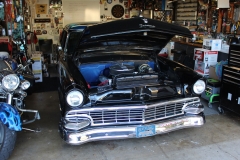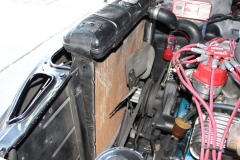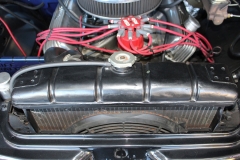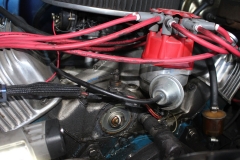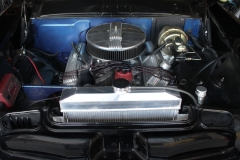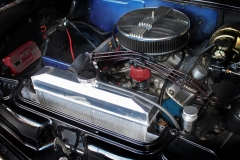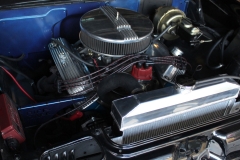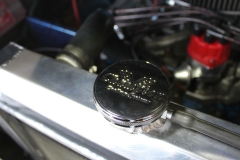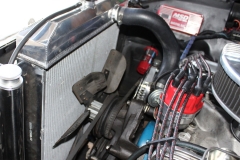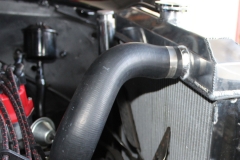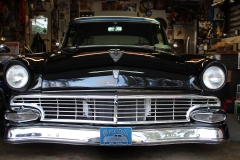Project Riff-Raff’s 390 tends to run a bit on the hot side.
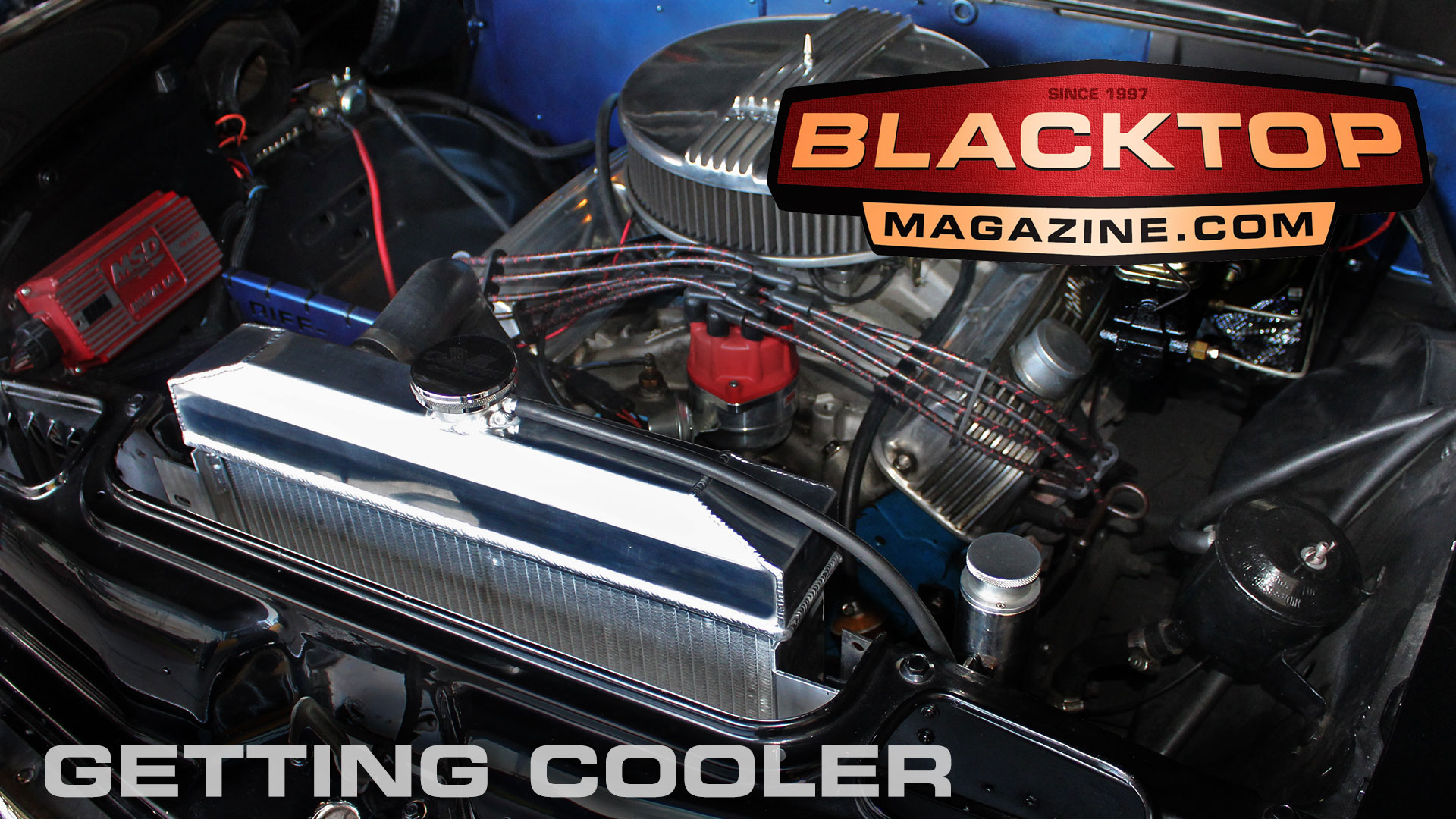 Around 190°-210°, the electric pusher fan kicks in as loud as can be. One day, I noticed the fan quit working. Hmm, thermostat? Switch? Checking all the fuses and all I come to find is the motor went kaputz (sp?). I drove it around all winter with it like that and didn’t seem to have any over-heating problems. We even went out to do a shop tour at Champion Cooling Systems in Lake Elsinore, about 45 miles east on the other side of Saddleback Mountain, on a warm day and she did OK. Ran about 210-215. Kinda the usual, but that was at freeway speeds. Luckily it was the middle of the day and not much traffic on the 91 frwy. We got a bit of bumper to bumper coming back through Anaheim Hills, but not too crazy. Another 10-20 minutes of it and we might have had a situation.
Around 190°-210°, the electric pusher fan kicks in as loud as can be. One day, I noticed the fan quit working. Hmm, thermostat? Switch? Checking all the fuses and all I come to find is the motor went kaputz (sp?). I drove it around all winter with it like that and didn’t seem to have any over-heating problems. We even went out to do a shop tour at Champion Cooling Systems in Lake Elsinore, about 45 miles east on the other side of Saddleback Mountain, on a warm day and she did OK. Ran about 210-215. Kinda the usual, but that was at freeway speeds. Luckily it was the middle of the day and not much traffic on the 91 frwy. We got a bit of bumper to bumper coming back through Anaheim Hills, but not too crazy. Another 10-20 minutes of it and we might have had a situation.
All-in-all, I knew it was time to really look at that old steel, brass and copper radiator and check out the aluminum goodies at Champion. Come to find out, not much of a stock set up with a 1968 Ford FE in a ’56 Fairlane, so we removed the old anchor out of the core support and took it over to Champion Cooling to measure up a custom cooler for the ride. Timing was right, because I knew I’d be over there for their first annual Classic Car Show. After the show, I gave the old beast to Matt and the boys to do their magic.
They measured up the old core and found a suitable mate. The challenge is how the radiator sits in the car, because of the larger block, it sits in the “six-cylinder” position on the core support. Farther forward than stock for the 312. This causes a unique problems. The hood peaks down and will hit the top of a stock 312 radiator in the “six-cylinder” position. So they figured it needed to have a core 1″ shorter. That’s what I like about Champion Cooling Systems. They will take the time to make sure if they don’t have a radiator in stock, they can custom fit one for you. All their radiator tanks are TIG welded, feature a fully brazed core using aircraft grade aluminum and no epoxies.
A bit over a week later we picked up the radiator to install it in ole Riff-Raff. The timing worked out good here too, because the stock fuel pump decided to spring a leak, so we picked up a new Edelbrock unit at Reids Rod Parts in Orange to stick in there while the radiator was out. While we were at it, I decided to change out the spark plug wires to the Vintage Wires by our friends over at ididit.
Back to the radiator. Not much to say about installing a radiator, other than the guys paid good attention to the measurements and she fit in the space fairly well. Matt said they had to cut down a stock ’55-’56 Mercury about an inch to match the measurements. Either that or cut the hood, we joked. When changing the radiator, it’s a good idea to change out the hoses as well. I ran over to Tops Auto Supply to get a couple of hoses, which I had to cut to fit. For the first cut I used a box cutter, then Billy came out to the garage and we brainstormed a bit. Maybe a hack saw would work better, and it did.
My buddy Joe Johnson of Underoath car club cleaned up and powder-coated the waterneck for me. While it was all apart, I was able to clean up the front of the engine pretty well as well as the valance between the grill and the radiator. Something that’s a bit tough to get too unless you have skinny long arms. When I got it all together, I was glad to see none of the new Prestone was leaking. Took her for a test drive around the neighborhood and got it up to temp. She stayed at 190° and that’s without any electric fan, just the flex fan that I’ve had since I bought the car 14 years ago. That’s about 20° cooler than before. Michael at Champion says it may be because the all aluminum radiator dissipates heat more efficiently than a copper/brass unit.
I recommend you take a look at their website and the tech tips on their blog at www.ChampionCooling.com. See you on the road!

